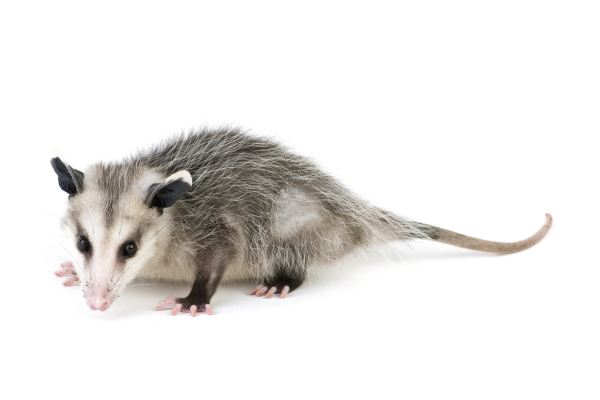While wild animals may appear friendly and approachable in the open outdoors, firsthand experiences with wildlife in your home or yard may teach you otherwise. Wild animals have the ability to protect themselves and can become violent when threatened, especially if they are already feeling anxious in their new surroundings.
There are a few easy steps you can take to make sure your property is not appealing to wildlife, and common pest-proofing tactics will help keep out wildlife pests as well as insect pests. The likelihood of opossums and raccoons breaking into your garage or garbage cans can be reduced by keeping trash in sealed bags and disposing of it on a regular basis. Squirrels can be kept out of your attic by trimming back tree limbs that hang over the roof.
Animals looking for shelter in the colder months of the year are more likely to invade human territory. Signs of an uninvited visitor include droppings in the attic or garage, unusual odors, and scurrying sounds in the walls, as well as misplaced siding. Listed below are the most often encountered pest animals in Missouri.
Raccoons
Raccoons can be easily recognized by their characteristic ‘bandit masks’ and ringed tails. They tend to congregate in dense forests near bodies of water, although they can be discovered just about anyplace. It’s not uncommon for them to make homes in chimneys, attics, and the space under porches of unlucky homeowners, in addition to hollow trees, brush heaps, barns, and abandoned structures. Raccoons pose a significant risk to your home and possessions. When they try to get in through the roof or the chimney, they might rip off the shingles and the siding. People who have had to defend their trash cans from raccoons know firsthand what intelligent, strong, and resourceful animals they are.Unless trapped or rabid, raccoons pose no danger to humans. Signs that a raccoon may be rabid include frothing at the mouth, stiff legs, unjustified aggression, and frothing at the mouth. Their eyes may be watering and they may be making a lot of strange noises. Obviously, you should never get too close to a rabid raccoon. Call us if you have a raccoon problem at your house instead of trying to handle it yourself, as doing so might be risky.
Skunks
Striped skunks and eastern spotted skunks are the two types of skunks found in Missouri. You can find striped skunks all around the state. They have a black body with two white stripes. Striped skunks range in size from 20 to 30 inches in length and 2 to 11 pounds in weight. Compared to their more common striped counterparts, eastern spotted skunks are noticeably smaller. They are primarily black, but are covered in white dots. The average length of an eastern spotted skunk is 14–22 inches, and its average weight is 3/4–2 34 pounds. Skunks, whether striped or eastern spotted, are nocturnal and feed on a wide range of foods, including insects, small mammals, and fruit. Skunks’ defense method of spraying an offensive odor is also well-known.
Unless they feel threatened, skunks are peaceful creatures who will leave you alone if you do the same for them. If you encounter a skunk, please give it some space. Skunks not only have a nasty spray, but they can also carry rabies. There are measures you can take to lessen the likelihood of ever encountering a skunk problem. Get rid of or lock up whatever edibles there might be. This includes things like trash cans, decaying fruit, pet food, and so on.
Opossums
Opossums look like rats but can grow to be as big as a 15-pound housecat. Opossums, despite first impressions, are harmless, clean, and mild-mannered creatures. They only become a problem when they attempt to make your attic or garage their permanent home. Though they may hiss if confronted, opossums rarely bite. They can spread disease and are a breeding ground for pests that can infest domestic animals, such as fleas, ticks, mites, and lice. Opossums are generally beneficial and humane trapping and relocation is recommended over killing them.Squirrels
The Eastern Fox Squirrel and the Eastern Grey Squirrel are the two most frequent species of squirrel in Missouri. Squirrels are rodents that must constantly chew in order to keep their ever-growing incisors from overgrowing their mouths. This habit often results in costly repairs to wooden decks, external paneling, fences, and electrical wires. Squirrels often chew their way into attics, causing structural damage, flooding, and electrical problems for homeowners. Squirrels can also be a nuisance at bird feeders, where they can disperse the seed and scare away the birds.Closing all openings with half-inch wire mesh can keep squirrels and other wildlife out, but you’ll want to be careful that no squirrels get stuck inside, since they’ll cause more damage trying to escape. Until the young have left the area, work should not begin. Providing an alternative food source for the squirrels is the best way to deal with them at your bird feeder. Hang a corn cob from a tree or scatter ground-prepared squirrel food.
If you are having problems with local wildlife, please contact us for an inspection. We offer quick exclusion and repair services and can also help you formulate a strategy to avoid future squirrel problems.

